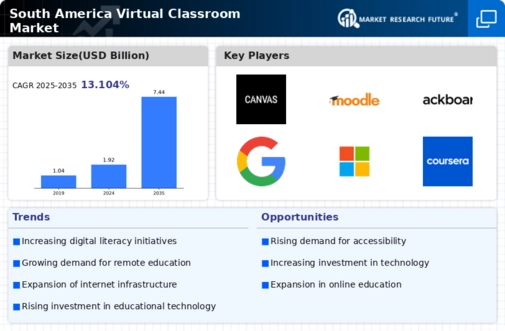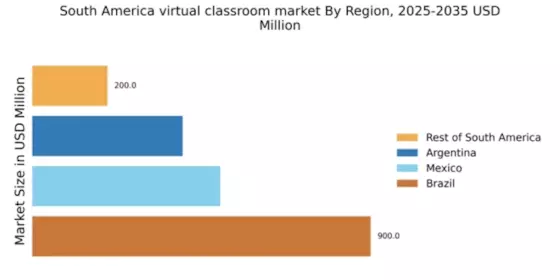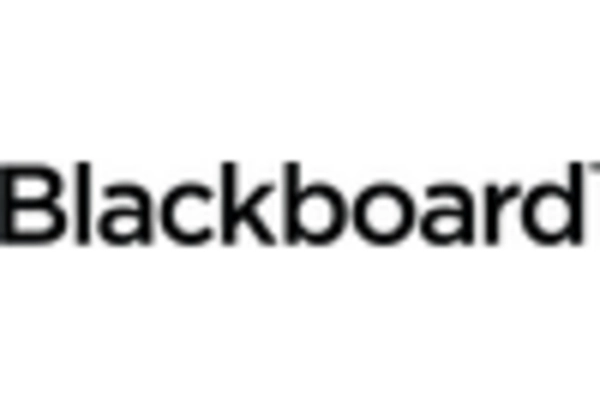Rising Internet Penetration
The increasing availability of high-speed internet in South America is a crucial driver for the virtual classroom market. As of 2025, internet penetration in the region has reached approximately 75%, facilitating access to online educational resources. This connectivity enables students and educators to engage in virtual classrooms seamlessly. The virtual classroom market benefits from this trend, as more individuals can participate in online learning without significant barriers. Furthermore, the growth of mobile internet usage, which accounts for a substantial portion of total internet access, suggests that educational institutions are likely to invest in mobile-friendly virtual classroom solutions. This shift not only enhances learning experiences but also expands the potential user base, thereby driving market growth.
Government Initiatives for Education
Government policies aimed at enhancing educational access in South America are significantly influencing the virtual classroom market. Various countries have implemented initiatives to promote digital learning, allocating substantial budgets for technology integration in schools. For instance, Brazil's Ministry of Education has invested over $200 million in digital education programs, which include virtual classrooms. Such investments indicate a commitment to modernizing education and improving learning outcomes. Additionally, these initiatives often focus on underserved communities, ensuring equitable access to quality education. As governments continue to prioritize digital learning, the virtual classroom market is likely to experience sustained growth, driven by increased funding and support for educational technology.
Increased Focus on Lifelong Learning
The rising emphasis on lifelong learning in South America is a pivotal driver for the virtual classroom market. As the job market evolves, professionals are increasingly seeking opportunities to upskill and reskill through online courses. This trend is reflected in the growing enrollment in virtual training programs, which has increased by approximately 40% in the past few years. Organizations are recognizing the importance of continuous education, leading to partnerships with virtual classroom providers to offer tailored training solutions. Consequently, the virtual classroom market is likely to expand as more individuals pursue ongoing education to remain competitive in their fields, thereby creating a sustainable demand for innovative learning platforms.
Technological Advancements in EdTech
Technological innovations in educational technology (EdTech) are driving the evolution of the virtual classroom market in South America. The integration of artificial intelligence, machine learning, and immersive technologies such as virtual reality is transforming how education is delivered. For instance, AI-driven platforms can personalize learning experiences, adapting content to meet individual student needs. As of 2025, the EdTech sector in South America is projected to grow by over 25%, indicating a robust interest in advanced learning tools. This technological progress not only enhances the effectiveness of virtual classrooms but also attracts investment from both public and private sectors, fostering a competitive landscape that benefits learners and educators alike.
Demand for Flexible Learning Solutions
The growing demand for flexible learning options in South America is reshaping the virtual classroom market. Students and professionals increasingly seek educational opportunities that accommodate their schedules and lifestyles. This trend is particularly evident in higher education, where enrollment in online courses has surged by approximately 30% in recent years. The virtual classroom market is responding to this demand by offering diverse course formats, including asynchronous and synchronous learning. Such flexibility not only attracts a broader audience but also enhances learner engagement and retention. Educational institutions are likely to continue developing innovative virtual classroom solutions that cater to the needs of diverse learners, further propelling market growth.


















Leave a Comment